Wave Polarization Control in Anisotropic Locally Resonant Materials
Abstract
:1. Introduction
2. Materials and Methods
2.1. Problem Formulation
2.2. Asymptotic Homogenization
3. Results
3.1. Anisotropic Effective Mass
3.2. Dispersion Properties: Band Gaps and Polarization Bands
3.3. Phase Velocity Diagrams
4. Transmission Analyses
4.1. Eccentricity with
4.2. Eccentricity with
5. Conclusions
Author Contributions
Funding
Data Availability Statement
Conflicts of Interest
References
- Liu, Z.; Liu, Z.; Zhang, X.; Mao, Y.; Zhu, Y.Y. Locally Resonant Sonic Materials. Science 2000, 289, 1734–1736. [Google Scholar] [CrossRef] [PubMed]
- Comi, C.; Moscatelli, M.; Marigo, J.J. Two scale homogenization in ternary locally resonant metamaterials. Mater. Phys. Mech. 2020, 44, 8–18. [Google Scholar]
- Tan, K.T.; Huang, H.H.; Sun, C.T. Blast-wave impact mitigation using negative effective mass density concept of elastic metamaterials. Int. J. Impact Eng. 2014, 64, 20–29. [Google Scholar] [CrossRef]
- D’Alessandro, L.; Ardito, R.; Braghin, F.; Corigliano, A. Low frequency 3D ultra-wide vibration attenuation via elastic metamaterial. Sci. Rep. 2019, 9, 3–10. [Google Scholar] [CrossRef] [PubMed]
- Sugino, C.; Ruzzene, M.; Erturk, A. Merging mechanical and electromechanical bandgaps in locally resonant metamaterials and metastructures. J. Mech. Phys. Solids 2018, 116, 323–333. [Google Scholar] [CrossRef]
- Comi, C.; Driemeier, L. Wave propagation in cellular locally resonant metamaterials. Lat. Am. J. Solids Struct. 2018, 15, 1–15. [Google Scholar] [CrossRef]
- Park, J.; Lee, D.; Rho, J. Recent advances in non-traditional elastic wave manipulation by macroscopic artificial structures. Appl. Sci. 2020, 10, 547. [Google Scholar] [CrossRef]
- Huang, Y.; Wu, J.H.; Lei, Y.; Niu, J. Impact protection enhancement by negative mass meta-honeycombs with local resonance plates. Compos. Struct. 2023, 321, 117330. [Google Scholar] [CrossRef]
- Calius, E.P.; Bremaud, X.; Smith, B.; Hall, A. Negative mass sound shielding structures: Early results. Phys. Status Solids B 2009, 246, 2089–2097. [Google Scholar] [CrossRef]
- Lee, S.H.; Wright, O.B. Origin of negative density and modulus in acoustic metamaterials. Phys. Rev. B 2016, 93, 024302. [Google Scholar] [CrossRef]
- Bensoussan, A.; Lions, J.L.; Papanicolaou, G. Asymptotic Analysis for Periodic Structures; North-Holland Publishing Company: Amsterdam, The Netherlands, 1978; p. 700. [Google Scholar]
- Auriault, J.L.; Bonnet, G. Dynamique des composites élastiques périodiques. Arch. Mech. 1985, 37, 269–284. [Google Scholar]
- Auriault, J.L. Acoustics of heterogeneous media: Macroscopic behavior by homogenization. Curr. Top. Acoust. Res. 1994, 1, 63–90. [Google Scholar]
- Craster, R.V.; Kaplunov, J.; Pichugin, A.V. High-frequency homogenization for periodic media. Proc. R. Soc. A Math. Phys. Eng. Sci. 2010, 466, 2341–2362. [Google Scholar] [CrossRef]
- Comi, C.; Marigo, J.J. Homogenization Approach and Bloch-Floquet Theory for Band-Gap Prediction in 2D Locally Resonant Metamaterials. J. Elast. 2020, 139, 61–90. [Google Scholar] [CrossRef]
- Faraci, D.; Comi, C.; Marigo, J.J. Band Gaps in Metamaterial Plates: Asymptotic Homogenization and Bloch-Floquet Approaches. J. Elast. 2022, 148, 55–79. [Google Scholar] [CrossRef]
- Bonnet, G.; Monchiet, V. Negative refraction of elastic waves on a metamaterial with anisotropic local resonance. J. Mech. Phys. Solids 2022, 169, 105060. [Google Scholar] [CrossRef]
- Yang, X.; Chai, Y.; Li, Y. Metamaterial with anisotropic mass density for full mode-converting transmission of elastic waves in the ultralow frequency range. AIP Adv. 2021, 11, 125205. [Google Scholar] [CrossRef]
- Ma, G.; Fu, C.; Wang, G.; Del Hougne, P.; Christensen, J.; Lai, Y.; Sheng, P. Polarization bandgaps and fluid-like elasticity in fully solid elastic metamaterials. Nat. Commun. 2016, 7, 13536. [Google Scholar] [CrossRef] [PubMed]
- De Ponti, J.M.; Iorio, L.; Riva, E.; Ardito, R.; Braghin, F.; Corigliano, A. Selective Mode Conversion and Rainbow Trapping via Graded Elastic Waveguides. Phys. Rev. Appl. 2021, 16, 034028. [Google Scholar] [CrossRef]
- Clement, G.T.; White, P.J.; Hynynen, K. Enhanced ultrasound transmission through the human skull using shear mode conversion. J. Acoust. Soc. Am. 2004, 115, 1356–1364. [Google Scholar] [CrossRef] [PubMed]
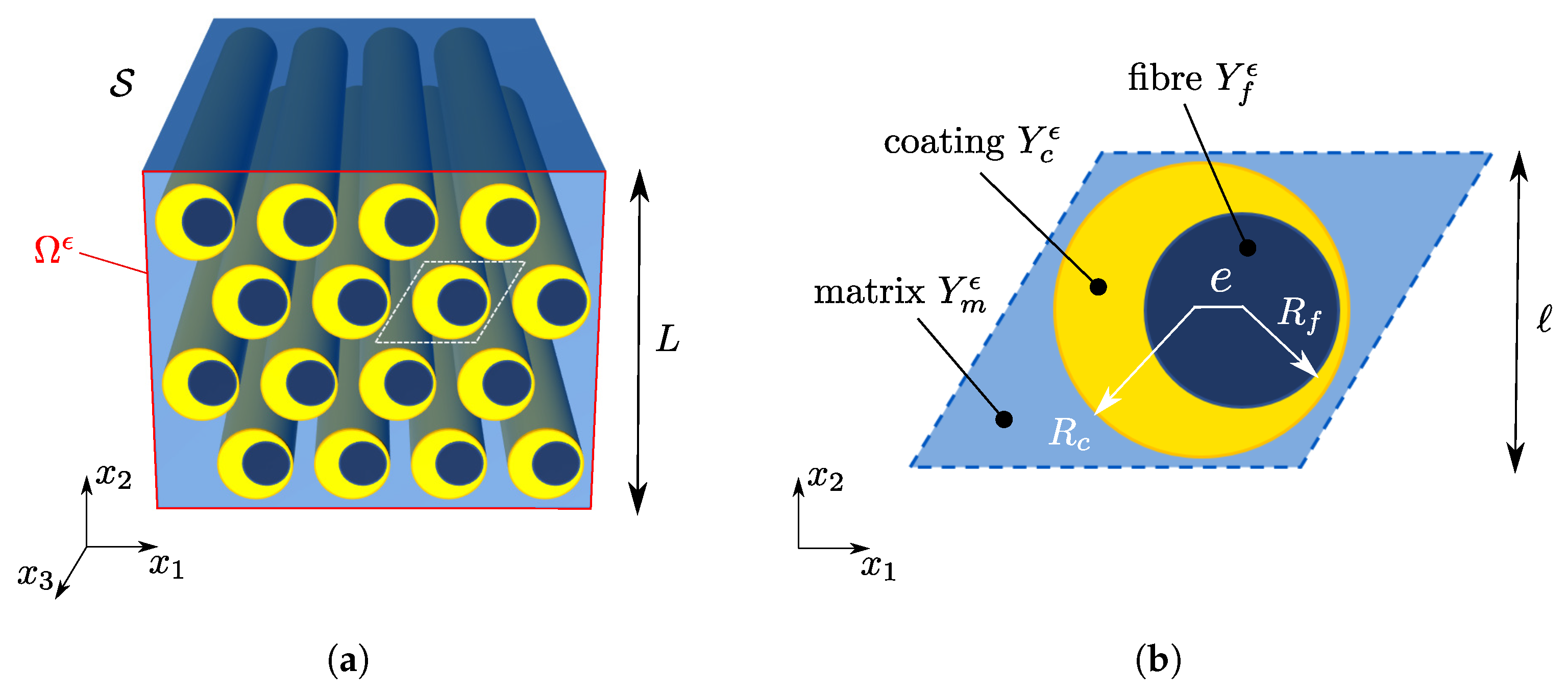

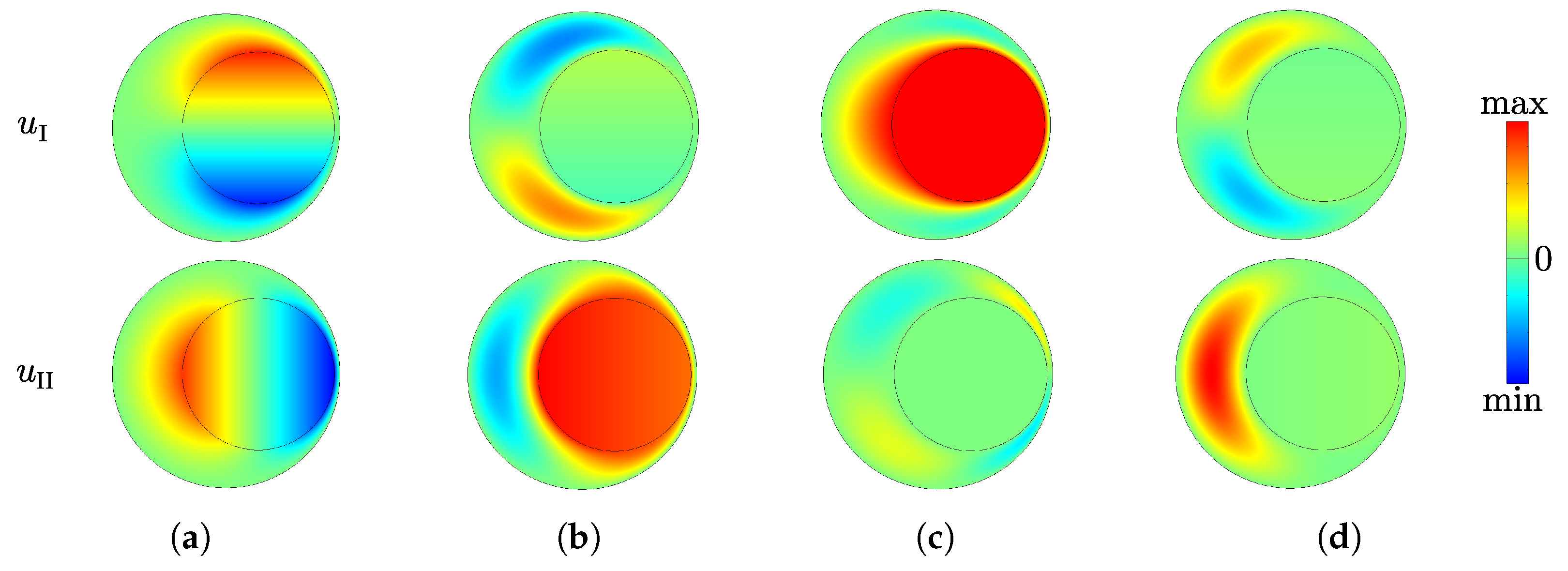
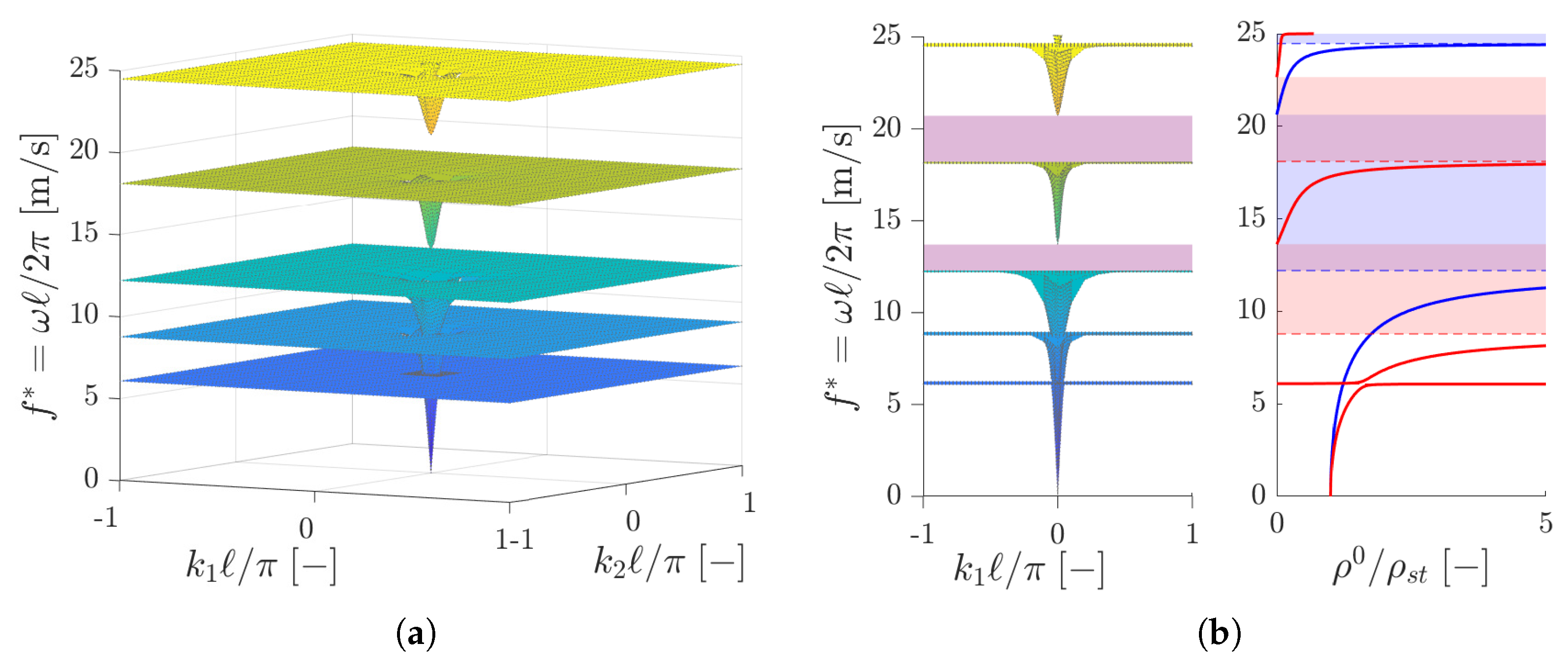


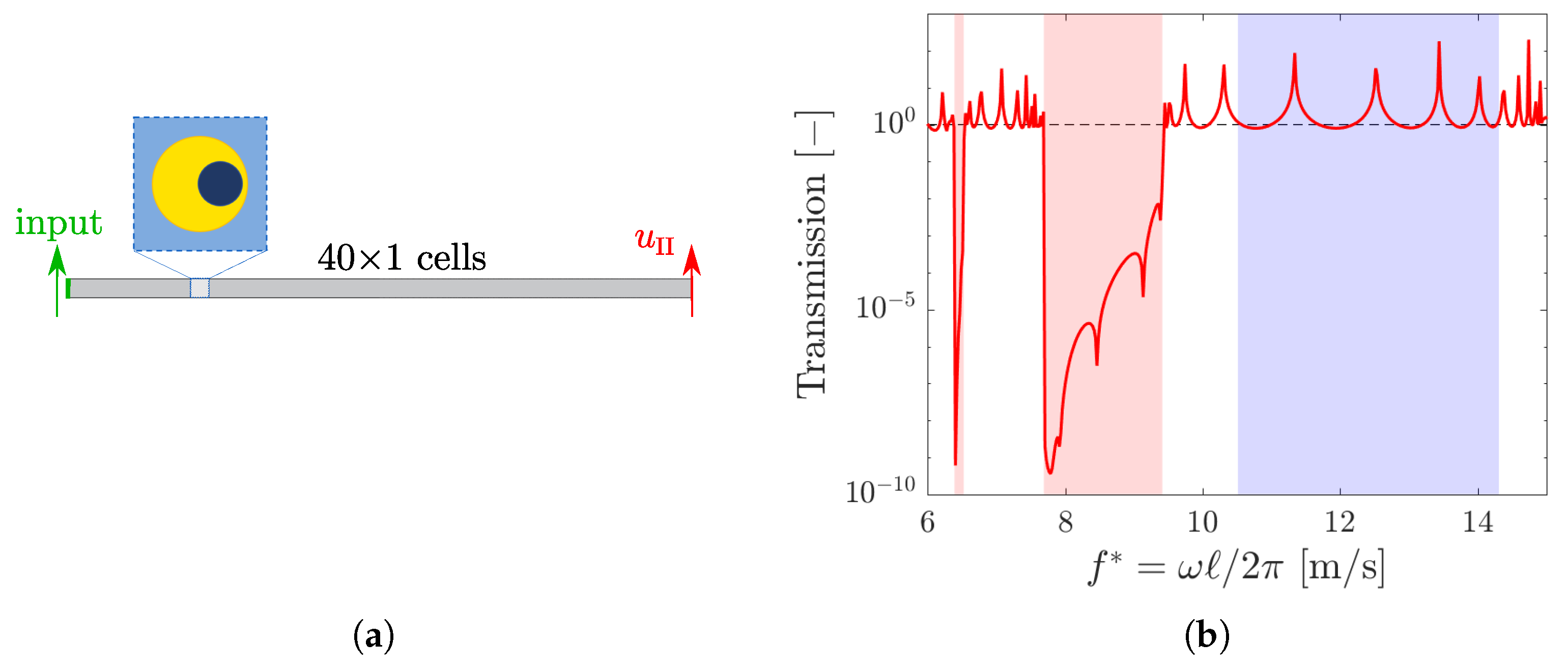

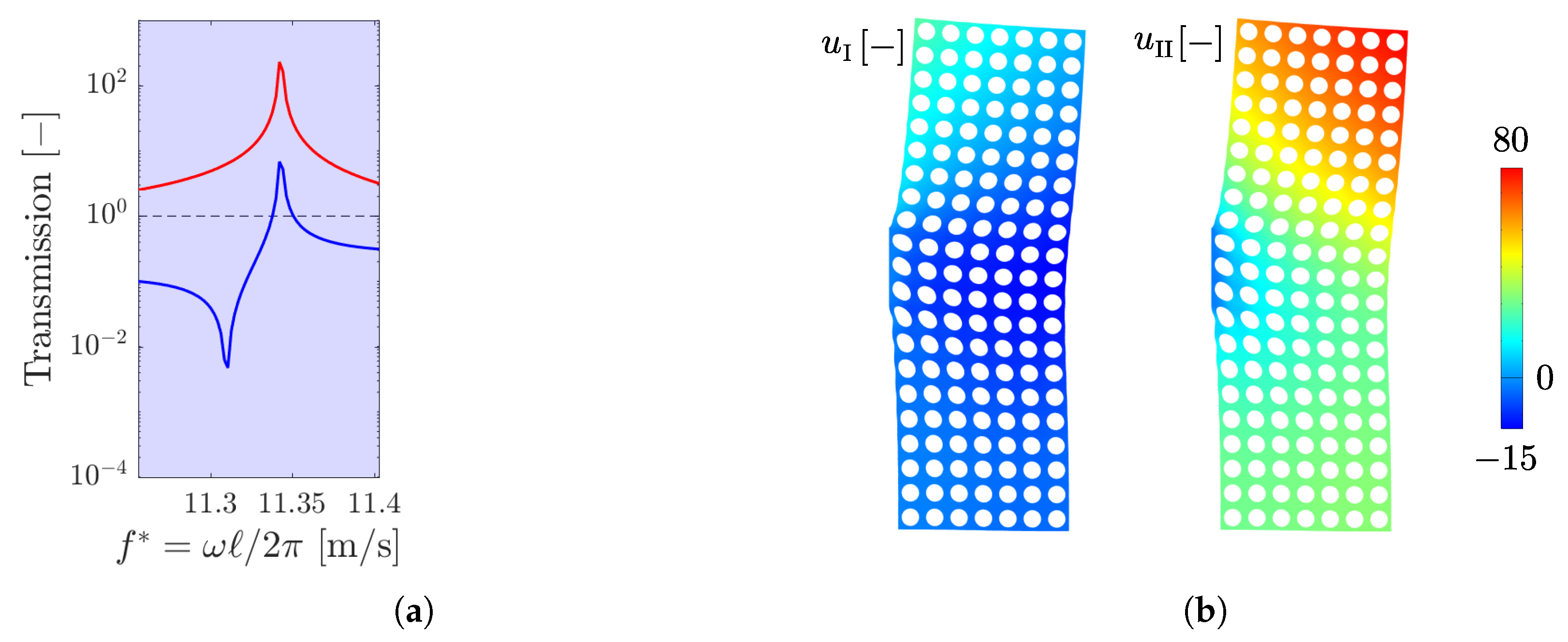
Disclaimer/Publisher’s Note: The statements, opinions and data contained in all publications are solely those of the individual author(s) and contributor(s) and not of MDPI and/or the editor(s). MDPI and/or the editor(s) disclaim responsibility for any injury to people or property resulting from any ideas, methods, instructions or products referred to in the content. |
© 2023 by the authors. Licensee MDPI, Basel, Switzerland. This article is an open access article distributed under the terms and conditions of the Creative Commons Attribution (CC BY) license (https://creativecommons.org/licenses/by/4.0/).
Share and Cite
Faraci, D.; Mendicino, F.; Vincenti, A.; Comi, C. Wave Polarization Control in Anisotropic Locally Resonant Materials. Appl. Sci. 2023, 13, 10797. https://doi.org/10.3390/app131910797
Faraci D, Mendicino F, Vincenti A, Comi C. Wave Polarization Control in Anisotropic Locally Resonant Materials. Applied Sciences. 2023; 13(19):10797. https://doi.org/10.3390/app131910797
Chicago/Turabian StyleFaraci, David, Francesco Mendicino, Angela Vincenti, and Claudia Comi. 2023. "Wave Polarization Control in Anisotropic Locally Resonant Materials" Applied Sciences 13, no. 19: 10797. https://doi.org/10.3390/app131910797
APA StyleFaraci, D., Mendicino, F., Vincenti, A., & Comi, C. (2023). Wave Polarization Control in Anisotropic Locally Resonant Materials. Applied Sciences, 13(19), 10797. https://doi.org/10.3390/app131910797





